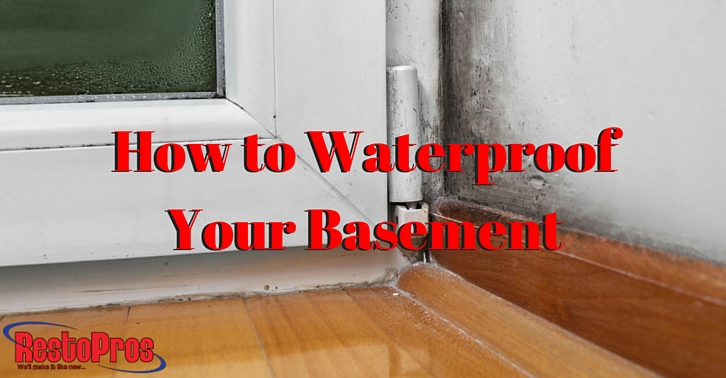 We all know that the best way to fix something that’s broken is to keep it from breaking in the first place. So the best way to clean up your house when it comes to water damage and mold is to prevent it from ever becoming a problem in the first place. We know that’s not always possible. And for the events where, despite your best efforts, storms and burst pipes have damaged your home, RestoPros Inc is always ready to go when you need someone to help clean up and restore your home after a disaster.
We all know that the best way to fix something that’s broken is to keep it from breaking in the first place. So the best way to clean up your house when it comes to water damage and mold is to prevent it from ever becoming a problem in the first place. We know that’s not always possible. And for the events where, despite your best efforts, storms and burst pipes have damaged your home, RestoPros Inc is always ready to go when you need someone to help clean up and restore your home after a disaster.
Still, a lot of damage for homes comes in the form of a flooded basement. The very best way to prevent that is to have your basement waterproofed, protecting it from possible flooding. Most waterproofing should have been done when the basement was built. Fortunately, there are still things you can do even now.
Outside
As good as your basement and foundation are, constant water flow over time will erode the structure away and lead to eventual flooding. The best thing you can do is channel and direct water away from the foundation. Make sure that all gutters and downspouts are clear and clean. The best way to test this is to pour water into the gutter and make sure it is draining properly. You want water to be carried at least five feet away from the house.
Take a look at the ground around your leading up to the edge of your home. It should always be slanted away from the home. If the slant of the earth causes water to pool against your foundation, it will soak into the earth and eventually lead to foundation damage and basement leaks. You should also stay mindful of plants that are growing too close to the edge. You want some clearance between the wall and any flowers or shrubs, since you want to avoid roots growing into your basement or places where water can pool and work its way in.
- Sloping Ground
- Downspouts and Water Channels
- Plants too Close to Foundation
Inside
Moving inside the basement, you’ll need to conduct a visual inspection of the walls and ceiling. If your basement or cellar does have a window, make sure that it’s sealed properly. Once your inspection is completed, you’ll need to repair any cracks in the walls with a cement patch.
Of course, fixing large cracks isn’t all you should be doing. Using a sealant and waterproof paint on the inside of the walls will help to limit any water that does manage to trickle into the cement wall, without allowing it to damage items on the other side.
Waterproofing your basement means taking precautions for when water does manage to get into your home. Conduct an emergency test of your sump pump. Have someone monitor the outflow line outside and pour water into the sump pump well. Emergency pumps should start almost immediately, while manual pumps will need to be turned on first. Make sure that all of the water is being pumped away from the well and out past the foundation. If your pump is malfunctioning, have it replaced immediately.
As a final task, if you’re worried about excess flooding, you can have a professional contractor inject hydroclay around the basement. This substance absorbs water readily, holding it until the ground dries out and preventing water from assaulting your basement walls directly.
- Fix Cracks and Holes
- Waterproof Paint/Sealant
- Sump Pump Installation/Repair
- Hydroclay Injection
Again, preventing a basement flood, or any water damage from flooding and burst pipes, is cheaper and easier to do than fixing things when they break. But, when water damage has become a problem, which can happen, you can rest easy knowing that there are reclamation teams, like those at RestoPros, who are readily able to help deal with extensive water and mold damage.
Don’t forget to follow RestoPros on Facebook, Twitter, LinkedIn, and Google+ for new Updates, News, and Discounts!
